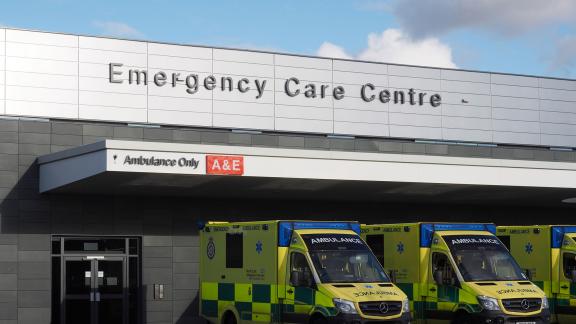How is the NHS performing this winter? 7 to 13 March

Staff absence
Staff absence in NHS trusts rose for the second week in a row to an average of 58,284 per day, having been 55,832 in the previous week. Prior to these two rises, they had fallen in seven consecutive weeks from a peak of 88,516 in week ending 9 January.
17,579 absences per day (30.2 per cent) were due to COVID-19 related reasons, compared to 14,822 (26.5 per cent) last week. The highest percentage in a calendar week was week ending 9 January, where 51.7 per cent of absences (45,736 out of 88,516 absences) were due to COVID-19 related reasons.
The impact is most noticeable in the south west, where 38.6 per cent of absences in week ending 13 March were related to COVID-19. One trust in the region reported COVID-19 related absences accounting for over 67 per cent of their total staff off.
Ambulance handover delays
Last week, 24.1 per cent of ambulance arrivals in England saw handover delays of 30 minutes or more and 10.3 per cent over 60 minutes. 20,274 delays were over 30 minutes, the worst on record for a week in the weekly urgent and emergency care situation report.
This comes the day after data from the Association of Ambulance Chief Executives showed hours lost to handovers over 60 minutes up over 1,000 per cent in February 2022 compared to February 2021, and up over 2,700 per cent in terms of hours lost for delays over 120 minutes.
Last month’s piece highlighted the south west’s challenges with handover delays and some of the reasons why this might be. The region is seeing an increase this week with 42.3 per cent of ambulances delayed over 30 minutes and 29.8 per cent over an hour, above the national averages.
Hospital discharge
The picture remains challenging despite the best efforts of NHS services. Of the average 21,011 patients per day last week who no longer met the criteria to remain in hospital, 11,619 could not be discharged, meaning 55.3 per cent remaining in hospital per day. This is slightly worse than the previous week, where 55.1 per cent remained (11,745 of 21,308). The best performing week of the winter remains at 51.5 per cent, over the festive period (week ending 26 December) and the worst 60.6 per cent (week ending 9 January), around the time patients in hospital with COVID-19 was at its highest in the winter peak.
Bed occupancy
Total general and acute bed occupancy (adult plus paediatric beds) was 92.5 per cent and up 0.05 per cent from the previous week’s data. The highest bed occupancy this winter was 93.2 per cent, week ending 12 December. Although we do not have comparative weeks for previous years, the general trend this winter has been occupancy percentages exceeding the winter of 2020/21, but below the three previous winters.
Adult critical care occupancy remained at a similar level, 74.6 per cent, compared to 74.9 per cent in the previous week. The average weekly occupancy of this this winter is 76.1 per cent.
These metrics come at the same time as the NHS tackles the latest uptick in patients admitted to hospital with COVID-19. In England, the seven-day average of admissions is 1,478 per day, which dropped to below 950 towards the end of February. The rise is particularly a problem in the south west, where 233 admissions were reported in one day on 13 March, the highest single day in over a year (since January 2021). The south west and south east are now both reporting higher numbers of admissions and patients in hospital than the peak in January.
Similarly, the number of patients in hospital with COVID-19 rose to over 11,000 on 16 March for the first time since 9 February 2022 (seven-day average now 10,085).
The latest primary diagnosis supplement shows 55.7 per cent of patients on the most recent day available (15 March) were in hospital ‘with’ COVID-19 as opposed to ‘for’ COVID-19 as the primary reason, slightly down from 56.2 per cent last week. The increase in patients in hospital with COVID-19 as a primary reason is unwelcome, and even where COVID-19 is not the primary diagnosis this still causes pressure on capacity and challenges with infection prevention control (IPC). This also varies considerably from region to region; in London, 73.7 per cent of patients in hospital with COVID-19 were primarily being treated for something else, but in the south west this is 45.1 per cent.
How is the NHS performing?
View our analysis of the latest NHS performance figures for a rounded view of how healthcare services are coping under immense pressure.



